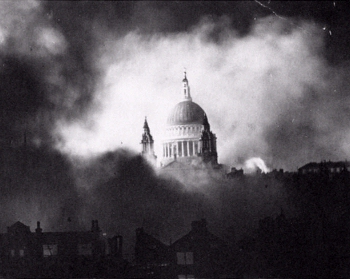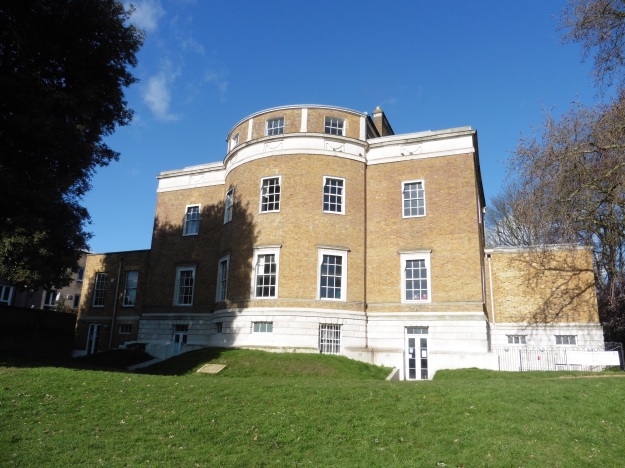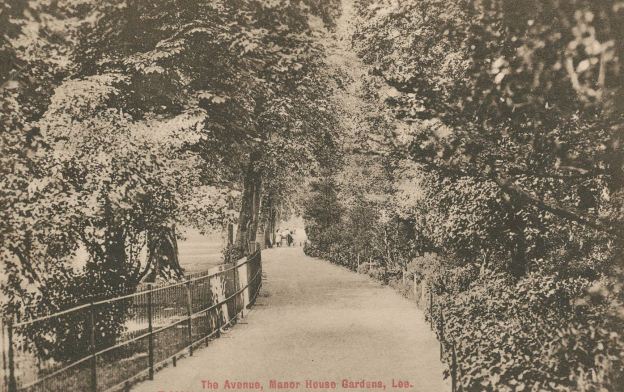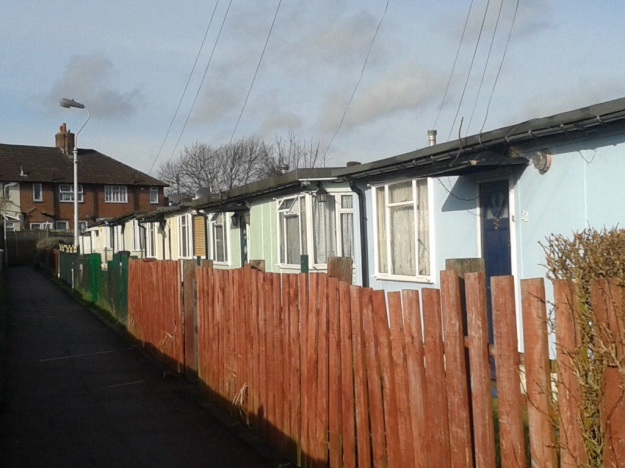In the first part of this post, we explored the 19th century history of Brightfield Road from its building as Robertson Street to its extension and renaming in the 1880s. We turn now to the 20th century and beyond, looking in particular at how the street fared in the World Wars.

We pick up the story with the 1901 census; the street had changed in the late Victorian period from homes for the building trades employed by John Pound, and other local builders, as well as for servants for the large houses in Lee, to a wider mixture of working class occupations. Looking at the lower numbers at the eastern end of the street, little had changed by 1901 with a mixture of working class jobs such as road mender, carpenter, horse keeper and coachman (this excludes the shops which we will return to in a later post).
The average size of households had reduced to 5.3 (from 5.8 a decade before) mainly as a result of slightly fewer households taking in lodgers and/or houses being split between households. This was much smaller than the numbers in the not dissimilar homes in Ardmere Road in Hither Green which were built at around the same time.
There was little change by 1911, although the average household size dropped again to 4.5. The nature of the jobs was little different though – manual trades and still lots relating to horse based transport.
The street fared badly in World War One, many of the sons, brothers and husbands of the households were either volunteers or conscripts to fight on the battlefields of France and Belgium – eight of them never returned home to Lee all were buried in cemeteries or remembered on memorials close to where they died.

- William Upton of number 42 was a Driver in the Royal Engineers and died on 13 March 1918. He was a labourer in civvy street and was around 25 when he died; he was buried at Sailly-Labourse Cemetery in France.
- Sidney George Munday lived five doors up from William Upton at 52, he was a Private with The Buffs (East Kent Regiment). He was 21 when he died on 14 April 1918 and is remembered at the Tyne Cot Memorial in Belgium.
- William Henry Church had lived just over the road at 33, he was just 20 when he died serving as a Private in the Queen’s Own (Royal West Kent Regiment) on 18 September 1916. He was buried at Etaples Military Cemetery in northern France.
- Willie J Church was just 18 when he died on 6 June 1918, serving as a Private in the London Regiment. He is buried at Bienvillers Military Cemetery in France. He lived at number 85, it isn’t clear whether he was related to William Henry Church.
- Arthur John Cobb will have known Willie, as he lived two doors away at 89 with his wife Gertie. They served in the same Regiment too. Arthur died on 18 February 1917 and was buried in France at Merville Communal Cemetery Extension.
- Alfred William Meggs lived seven doors down at 75, he was 20 and serving as a Corporal with the Queen’s Own (Royal West Kent Regiment) when he died on 3 October 1916. He is remembered at the Thiepval Memorial, pictured above.
- William George Bickle had lived five doors away at 65, he died two days after Christmas in 1915 aged just 16, the youngest on the street to perish. He shouldn’t have been there but, probably like Willie Church he will have lied about his age – soldiers needed to be 18 to sign up and 19 to be sent abroad as we saw with Herbert Burden from Catford who was shot for desertion aged just 17.
As World War Two broke out, the numbers living in the smaller houses at the eastern end of Brightfield Road were probably the lowest that there had ever been in the street’s existence – an average of just 2.9 people per home. A large chunk of this related to the evacuation of children in September 1939, just before the ‘census’ for rationing purposes was taken, the 1939 Register. However, even taking this into account household size had reduced with very few lodgers and a lot more houses just inhabited by couples and single people. This will probably be at least in part as a result of limited non-contributory pensions being paid from 1909.
Since 1911 all the horse related trades had disappeared and the eastern end of the street was home to several involved in train, lorry and tram related transport. There were several working at the Royal Arsenal making armaments. Very few had the ‘Heavy Work’ suffix to their role which would have allowed them to have larger rations though. The difference with Ardmere Road here is significant. A slightly smaller proportion of women worked to 28 years before in 1911, but the trades were little more diverse – still mainly shop, laundry and work and dressmaking though.
There were a couple of nights heavy bombing in early December 1940, on the nights of the 8th and 9th of December. Given the significance of these nights in the area we’ll return at some point but several houses had incendiary bombs hit them – 19, 20, 22, 43, 46, 52, 60, 113 and 123. All seemed to have been put out and the houses remain. There was a high explosive bomb that seems to have landed in the rear garden of 95 without causing too much damage.
Just after Christmas incendiary bombs rained down on Brightfield Road with 32, 34, 42, 43, 49, 63 and 83 all hit by them (some are pictured below) – the fires were put out by wardens and the inhabitants, but many of the roofs were damaged.

Early in 1941 there was a high explosive bomb that hit the roadway close to the bridge over the Quaggy, several houses were destroyed or had to be demolished due to the resulting major gas explosion (1). The damage is the darker colours is shown on the bottom left hand corner of the map below (2). No one died with only two requiring optional treatment but there was widespread damage in terms of broken windows and major structural damage to houses up to 100 metres away (3).

On the odd side, 103 – 107 were never replaced and the gap was used to form an entrance to Manor House Gardens. Over the road, whilst the last house, 92 (at the left of the photograph) survived, 84 to 90 didn’t and they were replaced by private sector housing after the war.
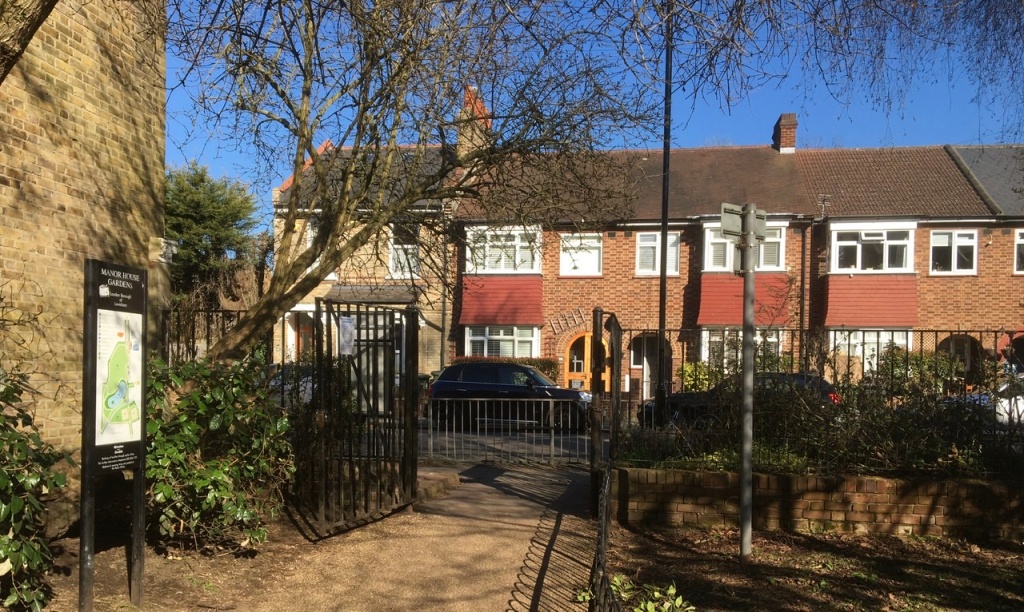
Over the bridge, 75 to 79 were lost too at some stage in the Blitz. They too weren’t replaced – the playground to what was then Hedgley Street School (now Holy Trinity School) was extended.
Several civilians on the street died;
- Annie Taylor from 121 Brightfield died in an attack on 110 Springbank Road as we saw in a post on that street;
- Alfred Dibley of 56 died on 5 July 1944 at St John’s Hospital on Morden Hill presumably as a result of a V-1 attack;
- Elizabeth Grant of 70 died at Albion Way Shelter early in the Blitz and
- Eliza Jenner was injured at an attack on number 4 on 11 May 1941 and died at Lewisham Hospital the same day.

There was a VE Day party there, a bit later than most on 2 June 1945. The street scene is now markedly different – the attractive bank buildings (once a temperance coffee house) and the three storey shops at the end of the street were lost after the war either to Penfold’s or Sainsbury’s expansion. We’ll return to the shops in a later post.
So who lives there now? While it isn’t possible to use census data from 2011 just for the street there is a Output Area that relates to most of the street, along with Lampmead Road. The employment categories are very different to the census data that we have looked at before. The main employment types of the 196 residents in employment were shops (7%), finance, insurance and banking (10%), professional and scientific (13%), education (19%) and health (7%). It will be interesting to see what changes there are when the 2021 Census results are collated.
Most of the homes seem to be owner occupied homes – although there are eight or nine owned by property companies letting the homes and three are let by social landlords. The change is massive compared with when the homes were built as Robertson Street when virtually all will have been privately rented.

Certainly rising house prices will make affordability nigh on impossible for the sort of people that lived there before World War Two. One of the bigger houses was sold for £842,500 in 2020 – now single-family dwellings, when built they had been ‘conveniently arranged for two families. Let to very respectable tenants at 12/- a week’ in 1892 (4).
One of the smaller houses sold for just under £500,000 just before the first lockdown.
We will return to Brightfield Road at some point in the future to look at the shops that used to be on the street.
Notes
- Phyllis Willmott (1988) Coming of Age in Wartime London, Peter Owen p51
- Laurence Ward (2015) The London County Council Bomb Damage Maps 1939-1945 p116
- Willmott op cit p51
- Kentish Mercury 25 July 1892
Credits
- Permission has been given by the copyright owners of the Bomb Damage Maps, the London Metropolitan Archives to use the image here, it reamins their copyright
- All the census and related data came via Find My Past (subscription required)
- The photographs of the VE Day party is part of the collection of the Lewisham Archives, it is used with their permission and remains their copyright;
- The photograph of the Theipval Memorial is on a creative commons via Wikipedia


























